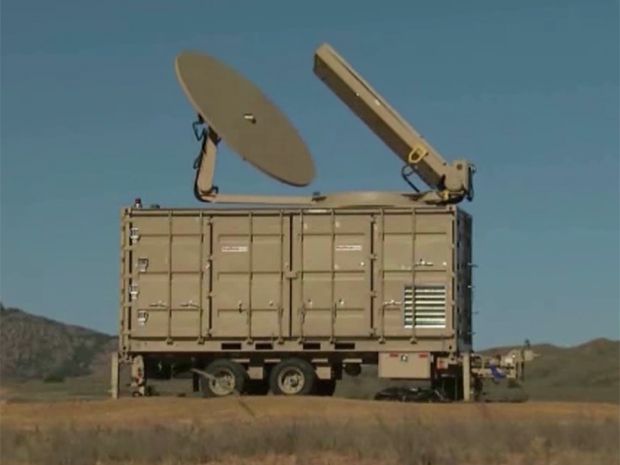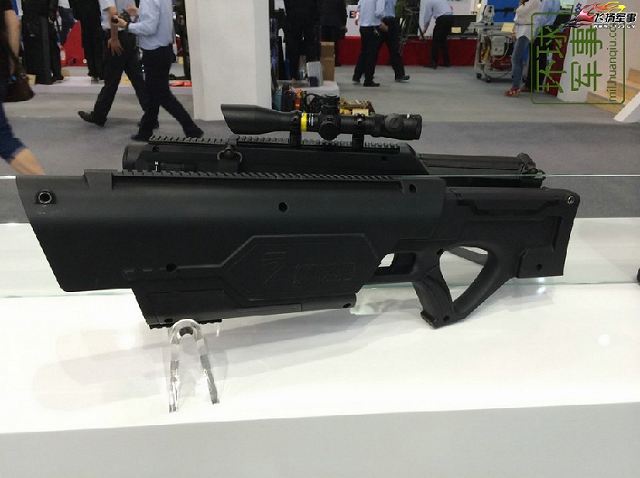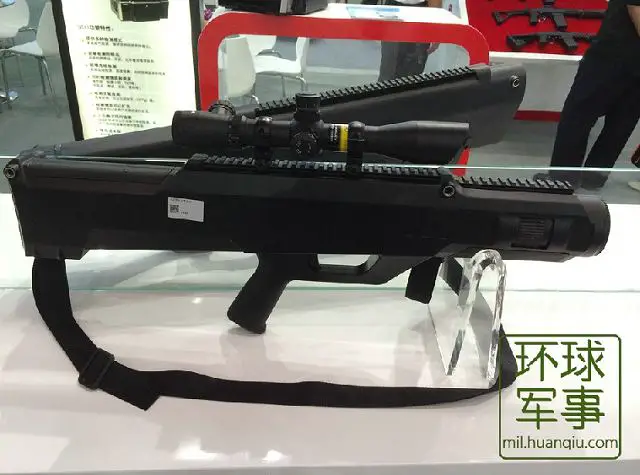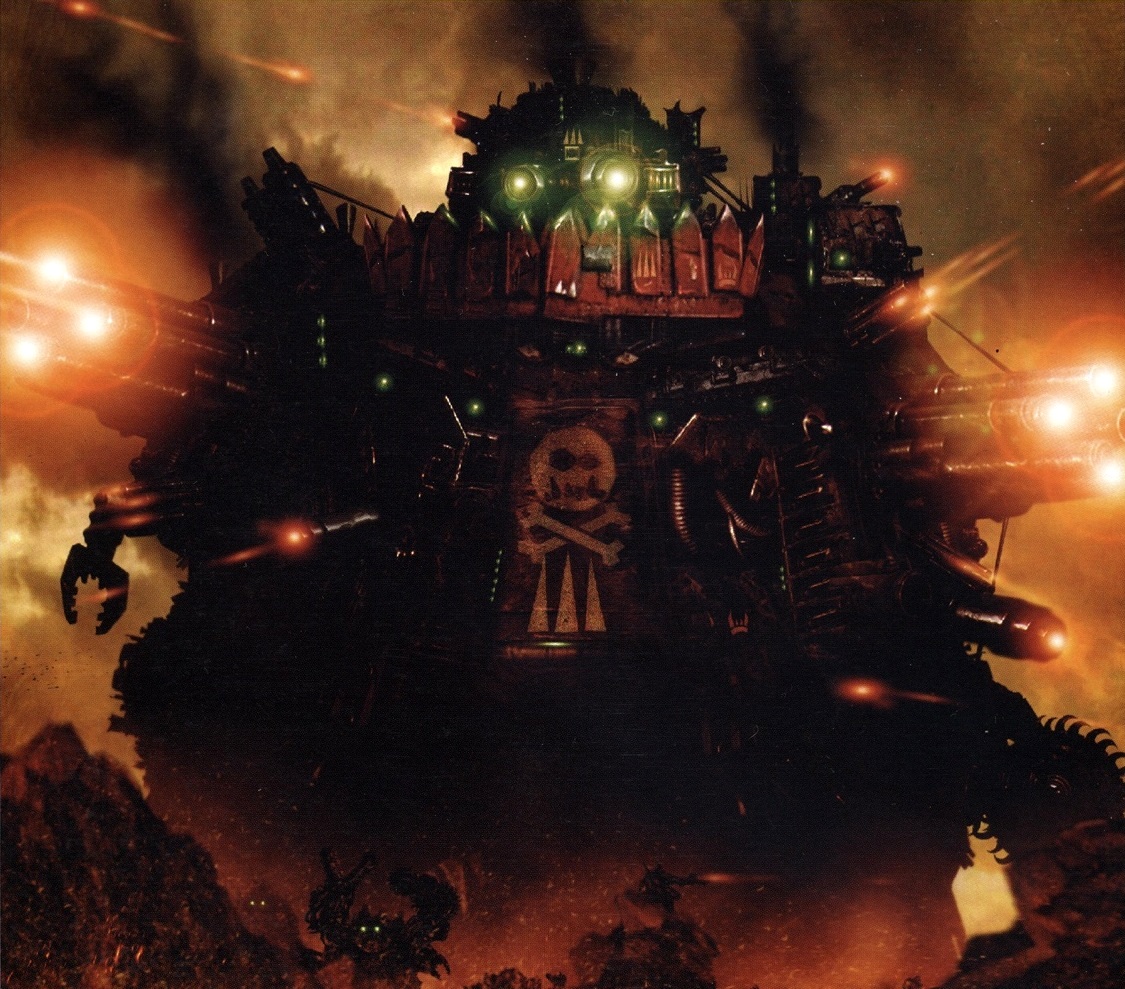Install the app
How to install the app on iOS
Follow along with the video below to see how to install our site as a web app on your home screen.
Note: This feature may not be available in some browsers.
You are using an out of date browser. It may not display this or other websites correctly.
You should upgrade or use an alternative browser.
You should upgrade or use an alternative browser.
Energia-aseet: laser ym.
- Viestiketjun aloittaja Umkhonto
- Aloitus PVM
Patu
Kenraali
Warning, contains maximum cheese.
Carl Gustavillako ne ampuivat lentokonetta?

Carl Gustavillako ne ampuivat lentokonetta?
Näyttäisi olevan, ja vielä varsin uutta mallia oleva putki.
The 80's are strong with this one - kaikki kuvanlaadusta 3D-animaation laatuun ja selostukseen suorastaan huutaa kasarimenoa.Warning, contains maximum cheese.

Kopioin teräsmiehen viestin tänne, koska oikea osoite.
A new video cleared by the Defense Department shows Raytheon’s “Phaser” high-power microwave (HPM) weapon in a demonstration at the U.S. Army Fires Center of Excellence at Fort Sill, Oklahoma. Raytheon used the swarm-destroying Phaser to bring down Flanker and Tempest drones during the live-fire demonstration conducted Sept. 30-Oct. 3, 2013. Three years later, the Defense Department has cleared the footage for public release. Raytheon says it has already reduced the size of the Phaser payload by half and is offering the system up for operational use.
Leaderwolf
Respected Leader
Predator C:n eli General Atomicsin "Avenger" ucavissa käytettävien aseiden listaan on ilmestynyt Hellads 150kw laser. Pikkuhiljaa se Star Wars saaga etenee.
Lisää jenkkien phaseristä.


http://spectrum.ieee.org/tech-talk/...-destruction-with-directed-energy-weapon-testThe Phaser is essentially a high powered microwave (HPM) cannon that runs on a diesel engine. Exactly how powerful this thing is (and what its range is) is still classified, but we do know that it can be tuned to either "disrupt" or "damage," where for most drones, "damage" seems to be synonymous with "destroy." It's also effective against cars and other vehicles, and almost anything else that wouldn't work properly without functioning electronics.
No matter how heavily cooked you like your drones, microwaves can achieve the desired effect in milliseconds, which is a major advantage of the Phaser over laser weapons: lasers typically require several seconds to burn through a target, and it's very difficult to keep them focused on a small, fast moving, and far away point for that amount of time. One commonality that all directed energy systems have is their very low cost of operation, which is in the range of cents per firing, far cheaper than either projectile weapons or missiles.
Raytheon has plenty of experience with microwave weapons; they've been working on a non-lethal anti-human "Active Denial System" (ADS) for over a decade. From 250 meters away, the ADS can gently heat the water just under your skin with millimeter-wave radiation, making anyone standing in the beam feel like they're on fire. The feeling stops as soon as you get out of the beam, and there are otherwise no physical consequences. As of 2015, the U.S. Air Force was looking at mounting ADS systems on AC-130 gunships as a non-lethal crowd control option.
We're not entirely sure what the current status of the Phaser is, although Raytheon told Aviation Week that the system is now half the size it was in the 2013 test and could be ready for operational deployment in less than two years. At the rate drone technology is evolving and drone population is expanding, it seems likely that there will be a serious need for it by then.
BlackFox
Ylipäällikkö
Nyt tulee akku, joka antaa virtaa tuhansiksi vuosiksi
EnergiaDigitalousTutkimus

Timanttiakun tehon lasketaan puoliintuvan 5 730 vuodessa. KUVA: COLOURBOX
Virtaa riittäisi käytännössä lähes loputtomasti.
Ydinjäte on melkoinen ongelma, mutta jätteen joukossa on myös arvokkaita raaka-aineita. Bristolin yliopiston fyysikot ja kemistit ovat nyt löytäneet tavan muuntaa tuhansia tonneja näennäisesti arvotonta ydinjätettä timanttiakuiksi. Ne voisivat tuottaa pienen sähkövirran, joka kestäisi pidempään kuin ehkä koko inhimillinen sivilisaatio.
Tällaisia timanttiakkuja ei tuotettaisi tappavan voimakkaasti säteilevistä polttoainesauvoista, vaan esimerkiksi niistä grafiittihidasteista, joilla fissioprosessia voimaloissa on säädelty. Britanniassa esimerkiksi tällaista tavaraa tulee lähes 95 000 tonnia.
Grafiitti on luokiteltu ydinjätteeksi, sillä reaktorisäteilyn kautta niihin on tullut epävakaata, radioaktiivista hiili-14:ää.
Hiili-14 on heikosti radioaktiivinen aine, mutta kuitenkin sen verran vaarallinen, ettei sitä voi varastoida sellaisenaan. Nieltynä tai paljain käsin kosketeltuna aine voi olla vaarallista.
Bristolin tutkijoiden ratkaisu on kuumentaa grafiittia niin, että suurin osa hiili-14-isotoopista kaasuuntuu ja puristaa se sen jälkeen kaasu sähköä tuottaviksi timanteiksi.
Timanttiakku tuottaa pienen sähkövirran.
Tutkijoiden mukaan tämä mahdollistaa sellaisen akun rakentamisen, joka ei ole liikkuvia osia. Siitä ei tule myöskään päästöjä ja se on huoltovapaa.
Itse timantit ovat radioaktiivisia, joten ne piti päällystää toisella timanttikerroksella. Siitä saadaan säteilysuoja.
Akkutimanteista on valmistettu jo ensimmäinen prototyyppi, jossa käytettiin nikkeli-63:a radioaktiivisena energianlähteenä. Nyt akkuja aletaan rakentaa hiili-14:stä.
Tutkijat laskevat, että akun teho puoliintuu 5 730 vuodessa.
Akkuja aiotaan käyttää paikoissa, joissa niitä ei voi helposti vaihtaa tai ladata uudelleen.
Käyttökohteita voisivan professori Tom Scottin mukaan olla vaikkapa sydämentahdistimet, satelliitit, korkealla lentävät lennokit ja jopa avaruusalukset.
Professori myös pyytää kansalaisilta ehdotuksia käyttökohteista. Niitä voi lähettää Twitterissä aihetunnisteella #diamondbattery.
EnergiaDigitalousTutkimus

Timanttiakun tehon lasketaan puoliintuvan 5 730 vuodessa. KUVA: COLOURBOX
Virtaa riittäisi käytännössä lähes loputtomasti.
Ydinjäte on melkoinen ongelma, mutta jätteen joukossa on myös arvokkaita raaka-aineita. Bristolin yliopiston fyysikot ja kemistit ovat nyt löytäneet tavan muuntaa tuhansia tonneja näennäisesti arvotonta ydinjätettä timanttiakuiksi. Ne voisivat tuottaa pienen sähkövirran, joka kestäisi pidempään kuin ehkä koko inhimillinen sivilisaatio.
Tällaisia timanttiakkuja ei tuotettaisi tappavan voimakkaasti säteilevistä polttoainesauvoista, vaan esimerkiksi niistä grafiittihidasteista, joilla fissioprosessia voimaloissa on säädelty. Britanniassa esimerkiksi tällaista tavaraa tulee lähes 95 000 tonnia.
Grafiitti on luokiteltu ydinjätteeksi, sillä reaktorisäteilyn kautta niihin on tullut epävakaata, radioaktiivista hiili-14:ää.
Hiili-14 on heikosti radioaktiivinen aine, mutta kuitenkin sen verran vaarallinen, ettei sitä voi varastoida sellaisenaan. Nieltynä tai paljain käsin kosketeltuna aine voi olla vaarallista.
Bristolin tutkijoiden ratkaisu on kuumentaa grafiittia niin, että suurin osa hiili-14-isotoopista kaasuuntuu ja puristaa se sen jälkeen kaasu sähköä tuottaviksi timanteiksi.
Timanttiakku tuottaa pienen sähkövirran.
Tutkijoiden mukaan tämä mahdollistaa sellaisen akun rakentamisen, joka ei ole liikkuvia osia. Siitä ei tule myöskään päästöjä ja se on huoltovapaa.
Itse timantit ovat radioaktiivisia, joten ne piti päällystää toisella timanttikerroksella. Siitä saadaan säteilysuoja.
Akkutimanteista on valmistettu jo ensimmäinen prototyyppi, jossa käytettiin nikkeli-63:a radioaktiivisena energianlähteenä. Nyt akkuja aletaan rakentaa hiili-14:stä.
Tutkijat laskevat, että akun teho puoliintuu 5 730 vuodessa.
Akkuja aiotaan käyttää paikoissa, joissa niitä ei voi helposti vaihtaa tai ladata uudelleen.
Käyttökohteita voisivan professori Tom Scottin mukaan olla vaikkapa sydämentahdistimet, satelliitit, korkealla lentävät lennokit ja jopa avaruusalukset.
Professori myös pyytää kansalaisilta ehdotuksia käyttökohteista. Niitä voi lähettää Twitterissä aihetunnisteella #diamondbattery.

http://www.defensetech.org/2016/11/29/the-future-eod-leaner-laser-armed-robots/Kicking down doors is high risk in the fight against terrorism because insurgents are likely to rig trap doors, tunnels or entry ways with lethal explosives, officials say.
The Explosive Ordnance Disposal Flight of the 96th Civil Engineer Group, the largest and busiest of all the service’s EOD units, gave Military.com a glimpse into its standard training center during a recent tour at Eglin Air Force Base, Florida.
EOD techs may soon use lasers to dispose of explosive devices, said Chief Master Sgt. Christopher Schott, superintendent of Eglin’s 96th Civil Engineer Group.
“The next step in our technology — that’s actually been proven, and we’re just maturing it now — is lasers,” Schott said during a Nov. 17 interview.
“The problem of why it took so long to mature is the amount of wattage needed in a laser to disrupt an ordnance item causes so much heat, it required too much air conditioning,” he said. “But they’ve got it down small enough now where the laser will disrupt an ordnance item and not require so much cooling.”
Leaderwolf
Respected Leader
The current LaWS, already deployed on the USS Ponce, is apparently exceeding all the expectations set upon it, and it only costs around 59 cents to fire, minus development and deployment costs of course. The BAE railgun is also in the same situation. The barrel is no longer destroyed after the first shot, and BAE have claimed they have increase barrel life from 10 shots to 1000 (claimed, not actual, so who knows how true this is). An autoloader is planned as well, and the amount of energy needed to fire a full powered shot has shrunk dramatically (still significant though).
Tähän ei ole antaa lähteitä koska otettu ulkomaiselta palstalta ja kirjoittaja toimii nimimerkillä kuten mekin eikä ilmeisesti halua kertoa lähteitään. Eli voi olla tai ei ole mutta hyvä jos on, eh..

Beerfect
Eversti
Miten voi olla noin lyhytkestoinen piippu?they have increase barrel life from 10 shots

 Kuluuko se niin kauheaa tahtia että menee lopulta liian väljäksi ja siten epätarkaksi?
Kuluuko se niin kauheaa tahtia että menee lopulta liian väljäksi ja siten epätarkaksi?Tähän ei ole antaa lähteitä koska otettu ulkomaiselta palstalta ja kirjoittaja toimii nimimerkillä kuten mekin eikä ilmeisesti halua kertoa lähteitään. Eli voi olla tai ei ole mutta hyvä jos on, eh..
Tämä video sopii teemaan monessakin mielessä. (käsittelee myös esim. lasereita etc). Mutta, railgunista. Ensin kerrotaan, että railgun on monessa mielessä teknologisesti jo kehitetty. Ja sitten kohdassa 24.00 annetaan arvio, että käytössä alle 10 vuoden päästä. Kyseessä siis Navyn tutkimusjohtaja.
Miten voi olla noin lyhytkestoinen piippu?
Kuluuko se niin kauheaa tahtia että menee lopulta liian väljäksi ja siten epätarkaksi?
Kyseessä ei oikeastaan ole piippu. Vaan kiihdytysrata. Mutta, kyllä kuluu. Tai kului.
Beerfect
Eversti
Tosiaan, kiihdytysrata. Sitä helpompihan sen pitäisi olla tehdä kulutuskestäväksi, tai paremminkin kulutusta kompensoivaksi. Eli esim. 5cm x 30cm x 1000cm kokoinen metallikisko, ja panos kulkee siinä 5cm x 1000cm pinnalla. Siinä onkin sitten 30cm kulutettavaa. Vai onkohan siinäkin haasteena että kuluma ei ole tasainen?Kyseessä ei oikeastaan ole piippu. Vaan kiihdytysrata. Mutta, kyllä kuluu. Tai kului.
 En kehtaa kuvitellakaan miten tarkkaa hommaa on raidetykillä ampuminen, ottaen huomioon sen järkyttävät ampumaetäisyydet, eli joku millimetrin kuluma aiheuttaa varmaan kauhean poikkeaman... Siinä on oltava runsaasti säätöjä tai sensoreita.
En kehtaa kuvitellakaan miten tarkkaa hommaa on raidetykillä ampuminen, ottaen huomioon sen järkyttävät ampumaetäisyydet, eli joku millimetrin kuluma aiheuttaa varmaan kauhean poikkeaman... Siinä on oltava runsaasti säätöjä tai sensoreita.Voisiko tarpeeksi suurella raidetykillä torjua (pilkkoa) meteoriittejä?
 Ja mikä on "tarpeeksi suuri"? Jotkut meteoriitit tai asteroiditkin ovat perkele umpirautaa...
Ja mikä on "tarpeeksi suuri"? Jotkut meteoriitit tai asteroiditkin ovat perkele umpirautaa...Tosiaan, kiihdytysrata. Sitä helpompihan sen pitäisi olla tehdä kulutuskestäväksi, tai paremminkin kulutusta kompensoivaksi. Eli esim. 5cm x 30cm x 1000cm kokoinen metallikisko, ja panos kulkee siinä 5cm x 1000cm pinnalla. Siinä onkin sitten 30cm kulutettavaa. Vai onkohan siinäkin haasteena että kuluma ei ole tasainen?En kehtaa kuvitellakaan miten tarkkaa hommaa on raidetykillä ampuminen, ottaen huomioon sen järkyttävät ampumaetäisyydet, eli joku millimetrin kuluma aiheuttaa varmaan kauhean poikkeaman... Siinä on oltava runsaasti säätöjä tai sensoreita.
Voisiko tarpeeksi suurella raidetykillä torjua (pilkkoa) meteoriittejä?Ja mikä on "tarpeeksi suuri"? Jotkut meteoriitit tai asteroiditkin ovat perkele umpirautaa...
Tuo ei ole ihan simppeliä. Rail gun toimii siten, että laitetaan kaksi pitkää kiskoa vierekkäin. Ja sitten laitetaan niiden väliin ammus. Ammus koskettaa molempia kiskoja. Sitten toiseen kiskoon johdetaan positiivinen jännite ja toiseen negatiivinen. Ammus sulkee virtapiirin ja lähtee sitten "kuin tykin suusta" sähkömagneettisen Lorenz-voiman ajamana.
Vaikka kiihdytys kestääkin vain hetken, kulkee kiskojen läpi Mega-ampeerin luokkaa oleva virta. Siinä ovat kiskot kovilla.
https://en.wikipedia.org/wiki/Railgun

Periaatteessa onhan se meteoriitinkin pysäytys teoriassa mahdollista, mutta saa olla sitten jo aika iso raidetykki. Parasta olisi sijoittaa raidetykki avaruuteen ja ampua meteoriitti pieniksi palasiksi siten että palaset palaisivat ilmakehässä.
Beerfect
Eversti
Jeps. Artikkelissa tulikin monta hyvää kohtaa.Vaikka kiihdytys kestääkin vain hetken, kulkee kiskojen läpi Mega-ampeerin luokkaa oleva virta. Siinä ovat kiskot kovilla.
https://en.wikipedia.org/wiki/Railgun
Myös kappaleet "Design considerations", "Materials used" ja "Heat dissipation".The rails need to withstand enormous repulsive forces during shooting, and these forces will tend to push them apart and away from the projectile. As rail/projectile clearances increase, arcing develops, which causes rapid vaporization and extensive damage to the rail surfaces and the insulator surfaces. This limited some early research railguns to one shot per service interval.


A PY131A Blinding Laser Weapon at Police Equipment Exhibition in Beijing, China.
http://www.armyrecognition.com/weap...blind_enemy_sensors_and_cameras_12112162.htmlAccording the Official PLA website, China has been updating its home-made blinding laser weapons in recent years to meet the needs of different combat operations.
The main features advantages of laser weapons includes weapon bolt travels at the speed of light, excellent accuracy, damage inflicted by the bolt can be dialed up or down, lasers have no recoil, and the laser energy is more cheaper than conventional ammunition.
A laser energy weapon can be used as anti-personnel weapon systems, potential missile defense system, and the disabling of lightly armored vehicles such as cars, drones, watercraft, and electronic devices such as mobile phones.
A laser weapon can burn holes in aircraft skins, the hulls of small boats, or the human body. They can heat artillery shells in midair, causing them to explode, or the storage containers at a fuel dump until the fuel ignites.
Laser weapons can significantly expand the spectrum of military effect. Laser weapons are precision weapons whose effect is restricted to a tiny spot. At low power, for instance, they can dazzle optronics, so that the users can no longer "see". At higher power levels, lasers can cut or penetrate structures. This can be used for example to destroy munitions or neutralize unmanned aerial systems. The list of applications can be expanded indefinitely.
Military lasers are rated by the electrical power they consume, in kilowatt—and eventually megawatt—range.
Ihan pakko lainata WH40k tähän tiedotteeseen


http://www.theregister.co.uk/2017/01/05/laser_directed_energy_weapon_contract_pr_churn/The Ministry of Defence has today re-announced for the third time that it has awarded a £30m contract to build a great big feck-off laser cannon for zapping the Queen's enemies.
Originally awarded in July 2016 to the Dragonfire consortium, the Laser Directed Energy Weapons (LDEW) contract immediately stalled after a challenge to the contract award by an unknown number of losing companies.
The MoD eventually settled the contract dispute last September, stating at the time that the deal had gone through.
While exciting, in the way that setting about an old shed with a sledgehammer and a couple of gallons of petrol is exciting, the LDEW project is certainly not new.
The Dragonfire consortium – made up of French-headquartered missile firm MBDA, BAE Systems, Leonardo (formerly known as Finmeccanica, parent company of infamous British helicopter firm AgustaWestland), Cambridge-based Marshall Defence and Aerospace, and Hampshire-based defence research company Qinetiq – is charged with building the demonstrator weapon, and a working prototype is hoped for by 2019.
It will have to meet five criteria to satisfy defence chiefs, including tracking targets in all weathers, maintaining sustained operation over a period of time, and various safety-related criteria, mostly aimed at ensuring the laser's operators or innocent bystanders don't get accidentally fried.
Harriet Baldwin, minister for defence procurement, said in a canned statement: "The UK has long enjoyed a reputation as a world leader in innovation and it is truly ground-breaking projects like the Laser Directed Energy Weapon which will keep this country ahead of the curve."
SNP MP Douglas Chapman, a member of Parliament's Defence Select Committee, told The Register: "I'm no longer surprised at the MoD's unerring ability to respond to criticism with diversions: in this case coming out with a rehashed version of a press release from last year to make up for a total lack of substance behind the assertion that 2017 is the 'Year of the Navy'.
"Though this time even seasoned Navy watchers will admit announcing research into a shiny new piece of kit at a time when the fleet is at a historic low of 17 frigates and destroyers is slightly putting the cart before the proverbial horse: it's time they got on with signing the contract to build the T26 in the summer as promised."
The obvious long-term practical application for the laser would be aboard a warship, and perhaps one of the first aged Type 23 frigates to be retired in the next five or six years could have her hull life extended to serve as a trials platform.
As the press get excited over the new laser cannon, however, it is important to remember that the Type 45 air defence destroyers are not completely reliable when operating in warm seas, HMS Queen Elizabeth's sea trials date is quietly slipping back, F-35 deliveries still continue at a pathetic drip-feed rate, and the RN still has no replacement anti-ship missiles lined up for when its current weapons are retired in 2018 – though sources tell El Reg that the UK is exploring options for this with France.
Various news outlets including the BBC, the Sun and the Daily Star (traditionally a very fertile ground for planted Andy McNabb-type tales of carefully anonymised derring-do from the front line) decided to run this hoary old news about the laser cannon today as if it was actually new.
It's one thing to get excited over a new giant zapper but it's begun to wear a bit thin after the third repetition without any actual progress having been made.
Viimeksi muokattu:
Leaderwolf
Respected Leader
USAF issues RFP for fighter aircraft laser weapon
Tuntuu kuin jenkeissä oltaisiin viime aikoina laitettu isoa vaihdetta silmään näissä jutuissa.
http://www.janes.com/article/66748/usaf-issues-rfp-for-fighter-aircraft-laser-weapon
